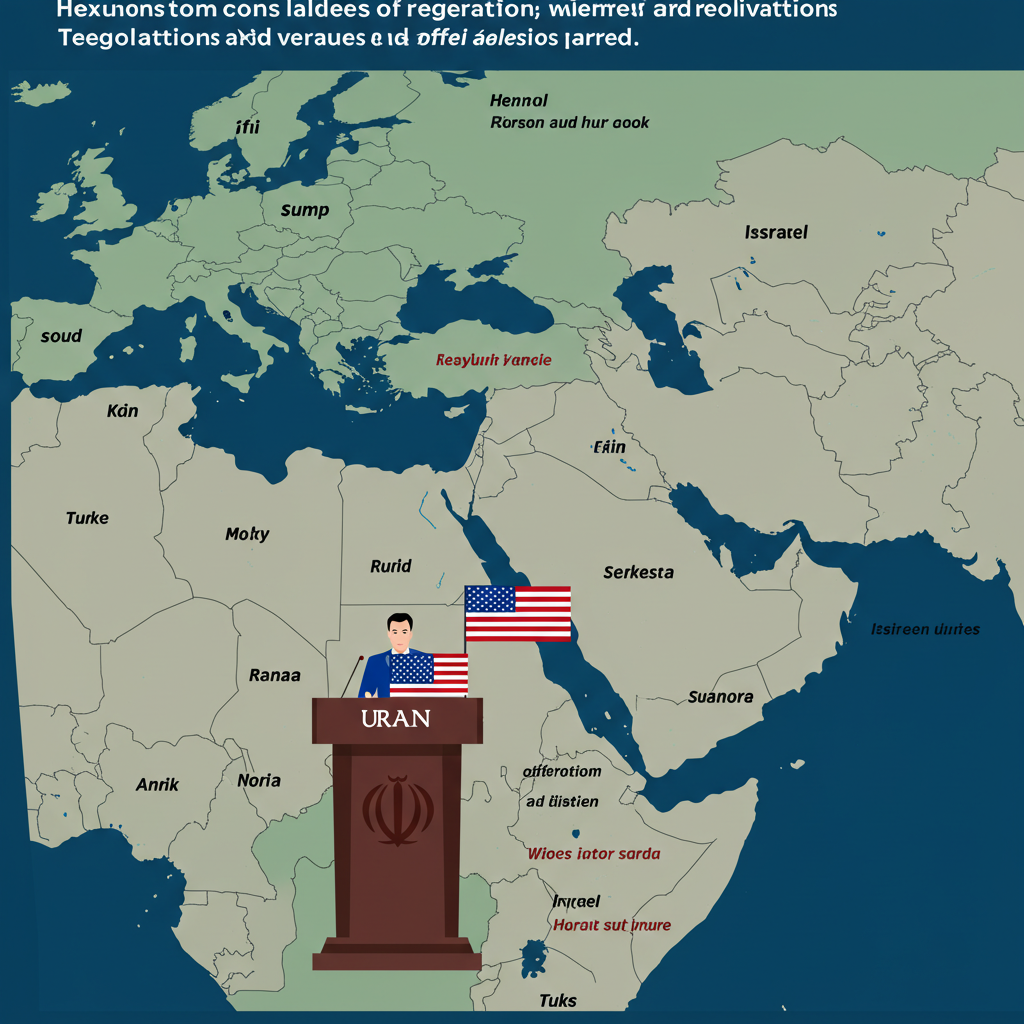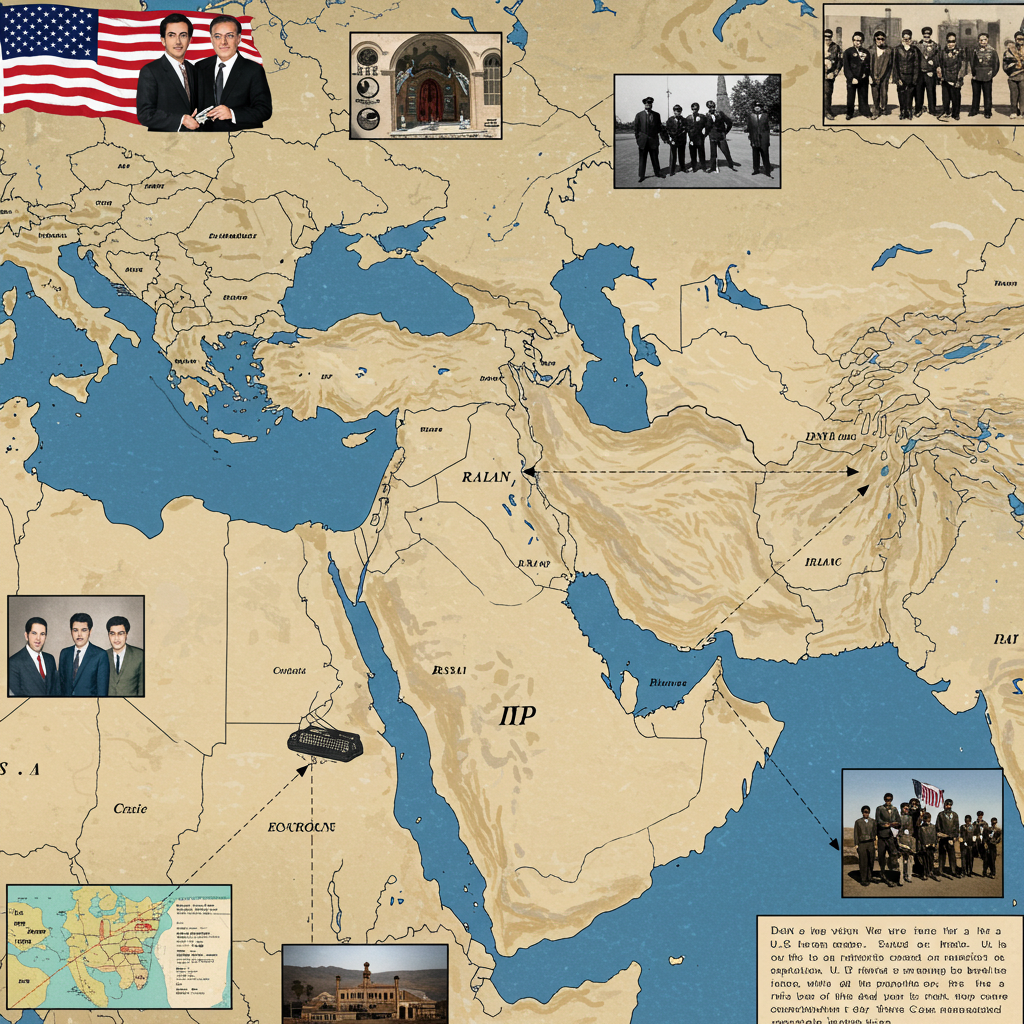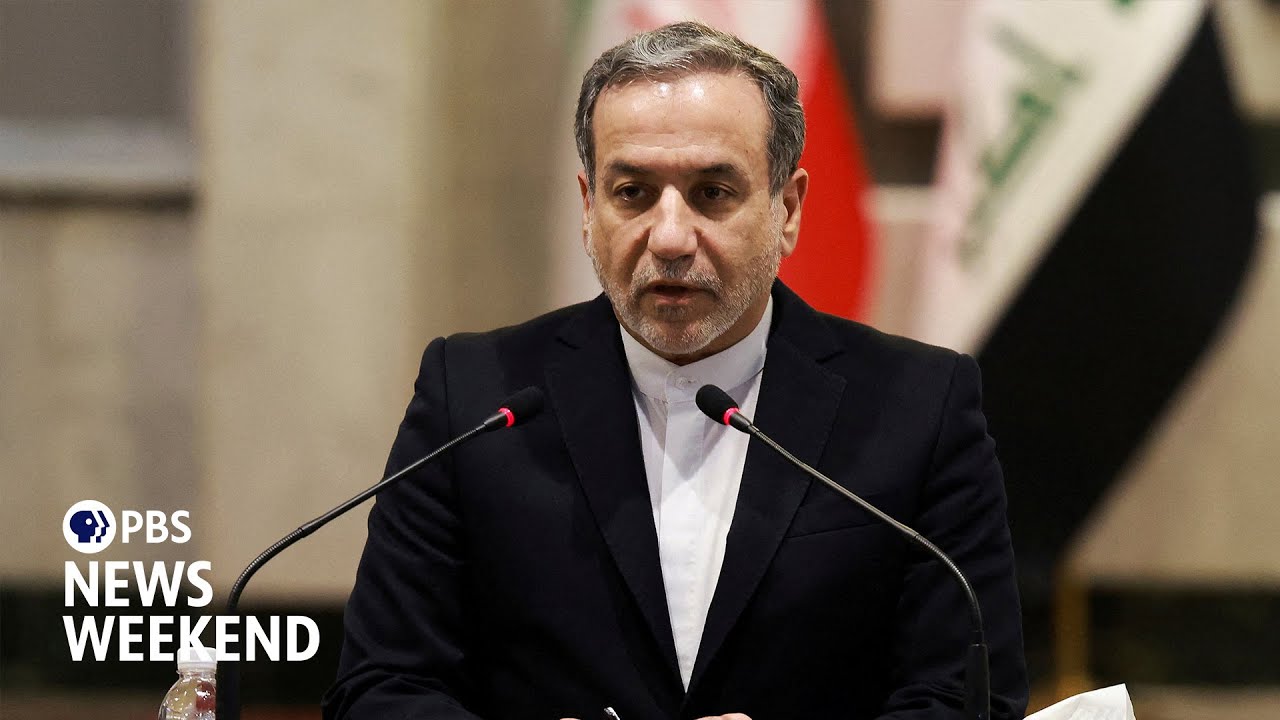Explore the key insights and implications of the negotiations between Iran and the U.S. under Trump. Understand the stakes and potential outcomes in this critical dialogue.
The relationship between the United States and Iran has been fraught with tension for decades, characterized by a series of conflicts, sanctions, and diplomatic failures. The advent of Donald Trump’s presidency in January 2017 brought a significant shift in U.S. foreign policy, particularly concerning Iran. This blog post explores the key elements surrounding the start of negotiations between Iran and the U.S. under Trump, examining the historical context, the motivations behind the negotiations, and the implications for both nations and the broader international community.
Historical Context
To understand the negotiations between Iran and the U.S. under Trump, it is crucial to consider the historical backdrop. The relationship between the two countries began to sour after the 1979 Iranian Revolution, which resulted in the overthrow of the U.S.-backed Shah and the establishment of the Islamic Republic of Iran. The subsequent hostage crisis, where 52 American diplomats and citizens were held for 444 days, solidified animosity between the nations.
Over the years, various events have exacerbated tensions, including Iran’s nuclear program, its support for militant groups in the region, and U.S. sanctions aimed at curbing its influence. The most significant diplomatic effort prior to Trump’s presidency was the Joint Comprehensive Plan of Action (JCPOA), commonly known as the Iran nuclear deal, negotiated in 2015 under President Barack Obama. This agreement aimed to limit Iran’s nuclear capabilities in exchange for relief from economic sanctions. However, many in the U.S. viewed the deal as flawed, leading to increased calls for a more stringent approach to Iran.
Trump’s Approach to Iran

Donald Trump’s campaign platform included a strong anti-Iran stance, criticizing the JCPOA as a “bad deal” that did not adequately address Iran’s regional activities or its ballistic missile program. Upon taking office, Trump quickly moved to withdraw the U.S. from the JCPOA in May 2018, reinstating severe economic sanctions on Iran. This decision marked a significant departure from the previous administration’s diplomatic efforts and set the stage for a new phase in U.S.-Iran relations.
The Trump administration’s strategy, often referred to as “maximum pressure,” aimed to isolate Iran economically and politically, hoping to compel the Iranian government to negotiate a new deal that would address not only its nuclear program but also its support for terrorism and human rights abuses. This approach was controversial, with critics arguing that it would lead to further destabilization in the region and diminish the chances for diplomatic resolution.
The Road to Negotiations
Despite the tough rhetoric and sanctions, the Trump administration expressed a willingness to engage in negotiations with Iran. In 2019, tensions escalated following attacks on oil tankers in the Gulf of Oman and the downing of an American drone by Iran, raising fears of military conflict. However, both sides appeared to leave the door open for dialogue.
In late 2019 and early 2020, several key developments indicated a potential shift toward negotiations:
- Iran’s Economic Struggles: The re-imposition of sanctions severely impacted Iran’s economy, leading to widespread protests and social unrest. The Iranian government faced mounting pressure to find a way to alleviate the economic crisis, which created an environment conducive to negotiations.
- Trump’s Desire for a Legacy: Trump’s administration sought to achieve a significant foreign policy victory, particularly in the Middle East. A successful negotiation with Iran could bolster his legacy and support his claims of being a dealmaker.
- Regional Dynamics: The geopolitical landscape in the Middle East was shifting, with countries like Saudi Arabia and Israel advocating for a tougher stance on Iran. However, there were also signs of potential rapprochement among some Gulf states and Iran, suggesting a complex regional dynamic that could influence U.S.-Iran negotiations.
- COVID-19 Pandemic: The outbreak of the COVID-19 pandemic in early 2020 further complicated the situation. Iran was one of the countries hardest hit by the virus, prompting calls from various international actors, including some U.S. lawmakers, for humanitarian relief and a reconsideration of sanctions.
The Negotiation Framework
As the possibility of negotiations began to take shape, several key elements emerged regarding the framework for talks:
Pre-Conditions
Both sides had pre-conditions that complicated the negotiation process. Iran demanded the lifting of sanctions as a prerequisite for any discussions, while the U.S. insisted that Iran must first cease its support for militant groups and halt its missile program. These conflicting demands created a stalemate that made meaningful dialogue difficult.
Third-Party Mediation

There were discussions about the potential role of third-party mediators, including European allies and regional powers, in facilitating negotiations. The European Union, which played a significant role in the JCPOA negotiations, expressed a willingness to mediate between the two nations, although the Trump administration was often skeptical of European involvement.
Public Messaging
Public messaging from both sides played a crucial role in shaping the negotiation landscape. Trump often used social media to express his willingness to negotiate while simultaneously maintaining a tough stance on Iran. Iranian leaders, on the other hand, emphasized their resistance to U.S. pressure, framing negotiations as a sign of weakness.
Major Events Leading Up to Negotiations
Several pivotal events in 2020 set the stage for negotiations:
- Assassination of Qasem Soleimani: The U.S. assassination of Iranian General Qasem Soleimani in January 2020 significantly escalated tensions. Iran retaliated with missile strikes on U.S. bases in Iraq, leading to fears of a broader conflict. However, the incident also underscored the need for dialogue to prevent further escalation.
- U.S. Elections: As the 2020 presidential election approached, the Trump administration faced increasing pressure to demonstrate progress in foreign policy. Negotiating a deal with Iran could have served as a significant achievement to bolster Trump’s re-election campaign.
- Iran’s Nuclear Escalation: In response to U.S. sanctions, Iran began to gradually breach the terms of the JCPOA, enriching uranium beyond the agreed limits. This move was intended to signal its frustration with the lack of relief from sanctions and to leverage its position in any potential negotiations.
The Role of International Actors

The international community closely monitored the situation, with various countries expressing their interests in the outcome of U.S.-Iran negotiations. Key players included:
- European Union: The EU remained committed to preserving the JCPOA and urged both parties to return to the negotiating table. European leaders sought to mediate discussions and prevent further escalation.
- Russia and China: Both countries expressed support for Iran and criticized U.S. unilateralism. They offered to assist in facilitating dialogue, emphasizing the importance of a multilateral approach to resolving the crisis.
- Regional Allies: Countries like Saudi Arabia and Israel were wary of any negotiations that might lead to a renewed U.S.-Iran rapprochement. They lobbied the U.S. to maintain a hardline stance and to ensure that any deal would address Iran’s regional influence.
Challenges and Obstacles
Despite the potential for negotiations, several challenges and obstacles loomed large:
- Mutual Distrust: Decades of hostility had created deep-seated mistrust between the two nations. Overcoming this distrust would require significant diplomatic efforts and confidence-building measures.
- Domestic Political Pressures: Both leaders faced domestic political pressures that complicated the negotiation process. In the U.S., Trump’s base largely supported a tough stance on Iran, while in Iran, hardliners opposed any engagement with the U.S.
- Timing and Urgency: The urgency of negotiations was complicated by the approaching U.S. elections. The potential for a change in administration raised questions about the sustainability of any agreements reached under Trump.
Conclusion
The start of negotiations between Iran and the U.S. under Trump was marked by a complex interplay of historical grievances, geopolitical dynamics, and domestic pressures. While the administration’s maximum pressure strategy aimed to compel Iran to negotiate, the path to dialogue remained fraught with challenges. As both nations navigated this intricate landscape, the potential for meaningful engagement hung in the balance, with implications not only for U.S.-Iran relations but also for the stability of the Middle East and the international community as a whole.
As we look back on this period, it is clear that the negotiations were not merely about nuclear capabilities or sanctions; they represented a broader struggle for power, influence, and security in a region marked by volatility and uncertainty. The outcomes of these negotiations—whether they ultimately materialized or not—would shape the future of U.S.-Iran relations for years to come, underscoring the importance of diplomacy in addressing some of the world’s most pressing challenges.

